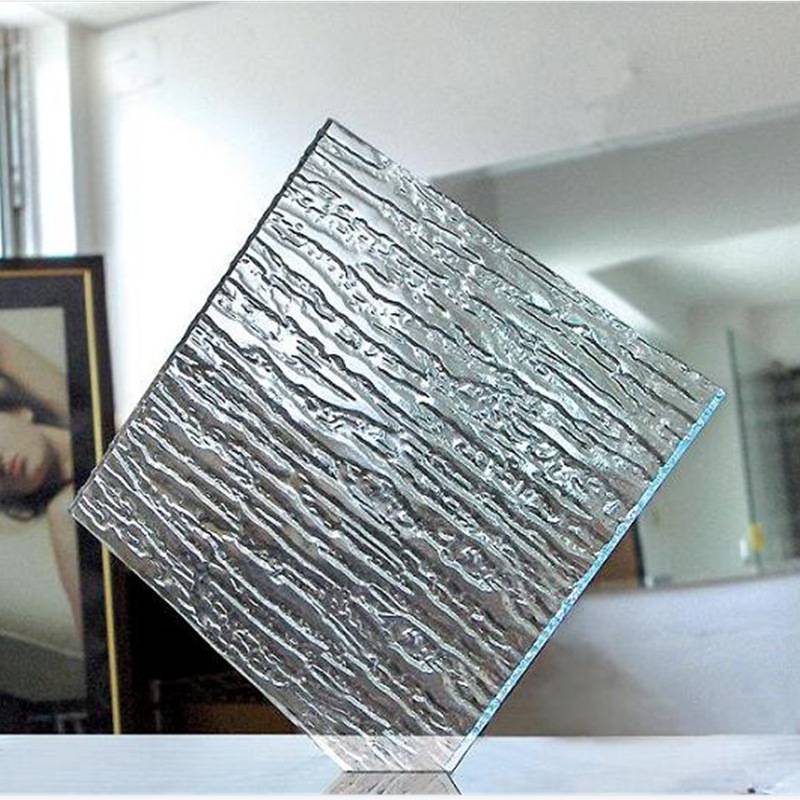The Art and Science of Tempered Glass Making
Tempered glass, also known as toughened glass, has become a staple in modern architecture, automotive design, and household applications. Its unique properties spring from a meticulous manufacturing process that enhances its strength and safety, making it one of the most sought-after materials in various industries. The craftsmanship and scientific principles involved in tempered glass making embody a fascinating fusion of art and engineering.
The process begins with the selection of high-quality raw materials, primarily silica sand, soda ash, and limestone. These components are carefully measured and mixed to create a glass batch. The purity of these materials is crucial, as impurities can compromise the final product's strength and clarity. Once the batch is prepared, it is heated in a furnace at temperatures reaching around 1,700 degrees Fahrenheit (925 degrees Celsius). This step, known as melting, transforms the raw ingredients into a molten glass that is free of bubbles and imperfections.
The Art and Science of Tempered Glass Making
The critical step in the creation of tempered glass occurs when the shaped glass undergoes a rapid cooling phenomenon known as “thermal tempering.” In this phase, the glass is heated again to around 1,300 degrees Fahrenheit (700 degrees Celsius) and then swiftly cooled using jets of cold air. This drastic temperature change induces compressive stresses on the surface of the glass while the core of the glass remains in tension. As a result, tempered glass exhibits remarkable strength compared to its untempered counterparts. It is approximately four to five times stronger than regular glass of the same thickness.
tempered glass maker
The safety benefits of tempered glass are equally impressive. Unlike standard glass, which shatters into sharp, dangerous shards upon breaking, tempered glass crumbles into small, blunt pieces. This property significantly reduces the risk of injuries, making it an ideal choice for use in areas where human contact is likely, such as shower doors, glass doors, and windows in high-rise buildings.
The versatility of tempered glass extends beyond its physical properties. Its ability to be tinted, coated, or laminated allows for an array of design possibilities. Architects and designers appreciate tempered glass for its aesthetic qualities, as it can enhance the natural light in a space while offering sound insulation and UV protection.
In recent years, the demand for tempered glass has surged, driven by its growing application in energy-efficient buildings and smart homes. As sustainability becomes increasingly important in modern construction, tempered glass offers a combination of strength, safety, and aesthetic appeal that meets contemporary design needs.
In conclusion, the art of tempered glass making represents a delicate balance between creativity and scientific innovation. Each step, from the careful selection of raw materials to the final thermal tempering process, contributes to the unique characteristics that make tempered glass an indispensable material in our everyday lives. As technology advances and new applications are discovered, tempered glass will undoubtedly continue to play a pivotal role in shaping the environments we live and work in.
 Afrikaans
Afrikaans  Albanian
Albanian  Amharic
Amharic  Arabic
Arabic  Armenian
Armenian  Azerbaijani
Azerbaijani  Basque
Basque  Belarusian
Belarusian  Bengali
Bengali  Bosnian
Bosnian  Bulgarian
Bulgarian  Catalan
Catalan  Cebuano
Cebuano  Corsican
Corsican  Croatian
Croatian  Czech
Czech  Danish
Danish  Dutch
Dutch  English
English  Esperanto
Esperanto  Estonian
Estonian  Finnish
Finnish  French
French  Frisian
Frisian  Galician
Galician  Georgian
Georgian  German
German  Greek
Greek  Gujarati
Gujarati  Haitian Creole
Haitian Creole  hausa
hausa  hawaiian
hawaiian  Hebrew
Hebrew  Hindi
Hindi  Miao
Miao  Hungarian
Hungarian  Icelandic
Icelandic  igbo
igbo  Indonesian
Indonesian  irish
irish  Italian
Italian  Japanese
Japanese  Javanese
Javanese  Kannada
Kannada  kazakh
kazakh  Khmer
Khmer  Rwandese
Rwandese  Korean
Korean  Kurdish
Kurdish  Kyrgyz
Kyrgyz  Lao
Lao  Latin
Latin  Latvian
Latvian  Lithuanian
Lithuanian  Luxembourgish
Luxembourgish  Macedonian
Macedonian  Malgashi
Malgashi  Malay
Malay  Malayalam
Malayalam  Maltese
Maltese  Maori
Maori  Marathi
Marathi  Mongolian
Mongolian  Myanmar
Myanmar  Nepali
Nepali  Norwegian
Norwegian  Norwegian
Norwegian  Occitan
Occitan  Pashto
Pashto  Persian
Persian  Polish
Polish  Portuguese
Portuguese  Punjabi
Punjabi  Romanian
Romanian  Russian
Russian  Samoan
Samoan  Scottish Gaelic
Scottish Gaelic  Serbian
Serbian  Sesotho
Sesotho  Shona
Shona  Sindhi
Sindhi  Sinhala
Sinhala  Slovak
Slovak  Slovenian
Slovenian  Somali
Somali  Spanish
Spanish  Sundanese
Sundanese  Swahili
Swahili  Swedish
Swedish  Tagalog
Tagalog  Tajik
Tajik  Tamil
Tamil  Tatar
Tatar  Telugu
Telugu  Thai
Thai  Turkish
Turkish  Turkmen
Turkmen  Ukrainian
Ukrainian  Urdu
Urdu  Uighur
Uighur  Uzbek
Uzbek  Vietnamese
Vietnamese  Welsh
Welsh  Bantu
Bantu  Yiddish
Yiddish  Yoruba
Yoruba  Zulu
Zulu 

